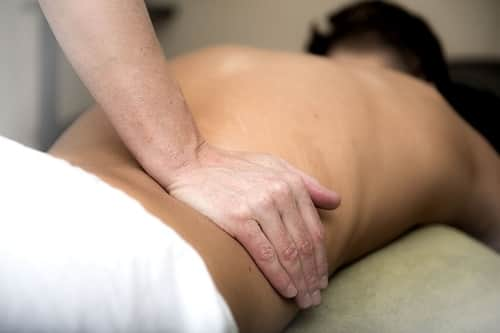There are many therapeutic and preventive methods of massage, and deep tissue massage is one of the most effective and beneficial. In this article, I will tell you why you should visit a massage therapist to get deep tissue massage sessions.
What is Deep Tissue Massage Therapy?
Deep tissue massage is a type of massage therapy that concentrates on straightening and recovery much deeper layers of muscles and connective tissue. It works very well for chronic pains and discomforts and contracted areas such low pain in the back, leg muscle tightness, as stiff neck and upper back, and chronic pain in the shoulders.
What is the difference between deep tissue massage techniques and classical massage, which almost all of us are familiar with? A few of the same strokes are used as traditional massage therapy, however the movement is slower and the pressure is deeper and concentrated on areas of stress and pain in order to reach the sub-layer of muscles and the fascia*.
*fascia – the connective tissue surrounding body muscles.

It follows that the massage therapist should be a specialist in their field, since the benefits of such a massage and the risk of injury or damage to the muscle are close.
When Is Deep Tissue Massage Most Beneficial?
Undoubtedly, the tissues that are located deep in the body, sometimes under a layer of other muscle, need to maintain a special tone, additional blood flow and should receive a portion of physical activity.
The main benefits of deep tissue massage are getting rid of chronic pain. Although, as I have already noticed, the muscles and ligaments that are located deep in the body also need additional exposure and stimulation for better functionality. These two factors make such a massage an effective treatment in the hands of a physiotherapist.
Deep massage of muscles and tissues helps to solve these issues if it is carried out efficiently and on time. This is especially important if a person is experiencing pain or has a pathology or disease. In this case, massage therapy plays an important role. Here is a list of diseases in which this massage is very effective:
- Chronic pain in the body
- Muscle tension and/or spasm
- Limited mobility in case of heavy injury or other health conditions (in such cases, massage should be done on a regular basis)
- Osteoarthritis pain
- Carpal tunnel syndrome and Sciatica
- Postural problems (often in younger patients
- Lower back pain in people after 30-50 years
- Recovery from injuries when muscles requires regain their mobility and function
- After a workout or bodybuilding to keep muscles in best conditions before the next gym visit
- Fibromyalgia and Tennis elbow
Side Effects
Of course, an inept or inappropriate effect of massage therapy on the body can have a negative effect. This doesn’t happen often, but you should always take it into account.

First, it is worth noting the painful sensations in the muscles and those parts of the body where deep tissue massage was performed. This is normal, since such a massage is an unnatural effect on the muscles and ligaments, so the body’s reaction in the form of aching pain is natural. You can apply a warm compress to the sore spot to reduce the pain. Usually, the pain goes away for 2 or 3 days after therapy. With frequent therapies, the pain is felt less and passes within a few hours.
Massage of deep tissues and ligaments of muscles involves strong pressing, more aggressive effects on the muscles and skeleton, which can, in special cases, lead to injuries.
For example, the elderly or, conversely, children under one year can easily get injured. Usually, this type of massage is not recommended for these age groups.
If you have blood clots in your veins, such a massage can cause you serious harm. Be sure to tell your doctor about your blood clot problem so that they can prescribe appropriate therapy.
Bone cancer, as well as osteoarthritis and osteoporosis, make bones very fragile. In such cases, I also ask you to pay serious attention to these problems if the doctor wishes to prescribe massage therapy for you.
If you have an open wound or skin infection of any kind, you’ll need to reschedule to prevent establishing a new infection or making an existing one worse.
In addition, if the patient has recently suffered a fracture, bruise, or muscle injury, such aggressive exposure to deep tissue by the massage therapist may aggravate or complicate recovery. Be sure to warn the massage therapist about injuries and complications of bones and muscles.
Conclusion
As I have already noted above, deep tissue massage should be performed by a qualified specialist in the direction of the attending physician. This type of massage is therapeutic and should be taken more seriously than classical massage.
About the Author
Reyus Mammadli is the author of this health blog since 2008. With a background in medical and biotechnical devices, he has over 15 years of experience working with medical literature and expert guidelines from WHO, CDC, Mayo Clinic, and others. His goal is to present clear, accurate health information for everyday readers — not as a substitute for medical advice.







